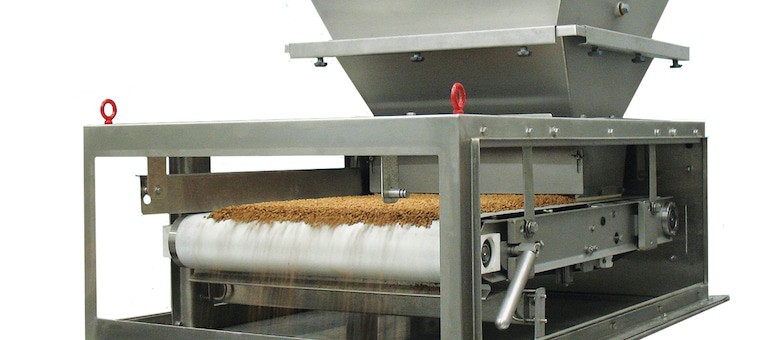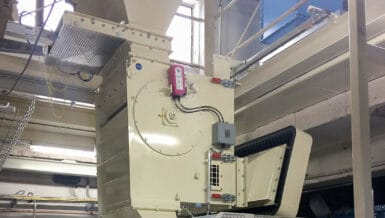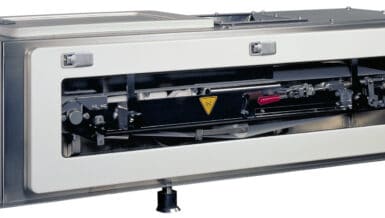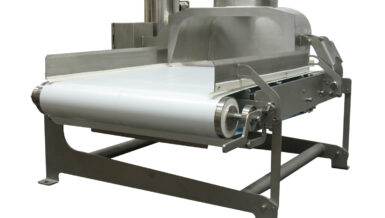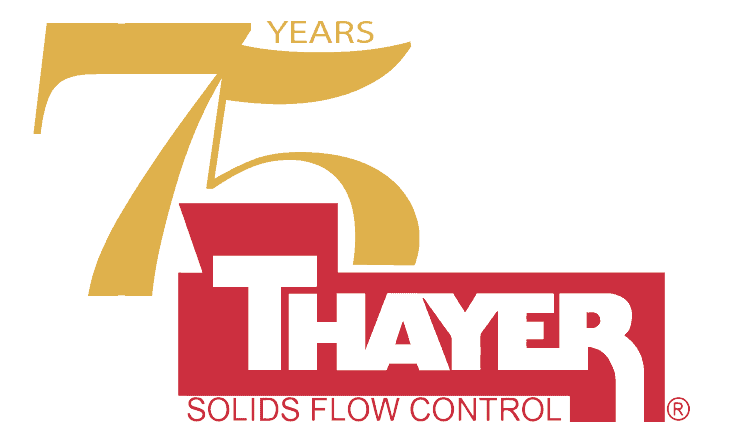The first thing to consider is how a weighbelt operates in comparison to screw or vibratory feeders and its overall advantages and disadvantages. When discussing gravimetric screw and vibratory feeders terms like LIW (Loss-In-Weight) when referencing continuous flow and LOW (Loss-Of-Weight) for interrupting flow i.e. batching is used. In both scenarios, the entire empty feeder is weighed via a scale or load cells and the removal of the feeders ‘dead weight’ is accounted for by taring the scale/load cells. This process provides the ability to weigh just the material once it has been placed in the feeder hopper. As the material is fed weight comes off of the scale/load cells.
Unlike a screw or vibratory feeder, a weighbelt is typically not directly weighed by load cells but has a feed rate calculated from the cross-sectional area of the material moving across a weigh deck or weigh idlers that are on load cells. This cross-sectional area of material, which is often referred to as bed depth, can be increased or decreased by adjusting a sheer gate to profile the bed of the material as it moves across the weighing section of the belt. Therefore, not only can you adjust the feed rate of the weighbelt via increasing the belt speed you can also increase the rate of the weighbelt by increasing its bed depth while keeping the belt speed the same. Based on this information a weighbelt is considered a gravimetric feeder, but it does not operate in a LIW or LOW mode.
This gives the weighbelt a distinct advantage over a LIW/LOW screw or vibratory feeder. The weigh deck or weigh idlers of a weighbelt are offset from the inlet, therefore they are not affected by the head load of material in a hopper that might be above the weighbelt. This means the hopper can be continuously filled without affecting the performance of the weighbelt, which is referred to as “flood” feeding the weighbelt.

The other way to “feed” the weighbelt is by “choke” feeding where the material is delivered to the weighbelt via a pre feeder (i.e. rotary airlock, flexible screw conveyor, etc.) as fast as the weighbelt can take it away. The belt speed is fixed and the speed of the pre feeder can be varied to increase or decrease the bed depth of the material. So again, the material can be continuously delivered to the weighbelt.
With the weigh deck (or weigh idlers) being offset from the inlet of the weighbelt a much smaller profile than you would typically find in a LIW/LOW feeder can be accomplished. Additionally, areas with low headroom and tight space requirements are a good fit for a weighbelt.
Another major advantage of a weighbelt is their gentle handling of friable (fragile) materials, which make them a great choice for avoiding breakage issues in feeding applications. Unlike a vibratory feeder which is also great for feeding friable materials, the weighbelt also offers “positive extraction” where it actually pulls material out of the bin.
As with any other feeding device, there are some disadvantages and limitations of using a weighbelt. The primary one for a weighbelt is the need for additional cleaning versus a screw or vibratory feeder especially when dealing with dry and dusty materials. If not periodically cleaned, a weighbelt will have belt tracking and/or slipping issues as dust accumulates and builds inside the unit and on the head and tail pulleys. Most weighbelts come equipped with scrapers that help reduce material build-up, but when working with dusty materials frequent cleanings will need to be part of normal maintenance procedures.
Weighbelts are not recommended for feeding floodable materials as there are typically not many solutions for keeping the materials from flooding out. An option would be lengthening the weighbelt and adding baffles near the infeed but this is not a guaranteed solution. Therefore, avoiding the use of weighbelts for floodable materials is usually the recommended choice.
Other materials not recommended for weighbelts include adhesives and cohesives as profiling these materials to get an even bed depth for better accuracy and performance is difficult.
If you still have questions if a weighbelt is the right equipment for your application speak with an engineer from a manufacturer of weighing and feeding equipment. They can review your application to make sure that you are selecting the ideal equipment for your specific needs. If they have testing facilities that are another great way to confirm your materials are compatible with a specific weighbelt or feeder.




